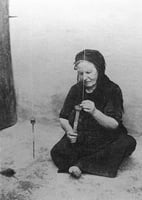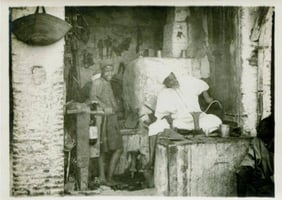In this episode, we take a deep dive into the fascinating history of gold thread-making in Fez,...
TIMELESS PODCAST EP1 : A Glimpse into Fez During the Merinid Era

In the inaugural episode of The Timeless Podcast, we journey into the heart of medieval Morocco, exploring the fascinating transformation of Fès under the Mérinid dynasty. This episode," A Glimpse into Fez During the Merinid Era" delves into a pivotal period marked by urban development, cultural renaissance, and shifting political power that reshaped the city's identity.
The Mérinid dynasty, ascending to power in the 13th century, embarked on a series of ambitious projects, most notably the construction of Fès Jdid—a new administrative and political center distinct from the older Fès el-Bali. Historians describe Fès Jdid as a "cité-Makhzen," an exclusive domain for the Mérinid court, officials, and a newly established Jewish quarter, the Mellah. This city within a city symbolized the Mérinids' intent to cement their authority while differentiating themselves from previous dynasties.
Religious and cultural patronage also flourished under the Mérinides, who promoted chérifisme and soufism to reinforce their legitimacy. Their support for Islamic scholarship reactivated Fès’s role as an intellectual hub, solidifying its spiritual significance in the Islamic world. This era witnessed a unique blend of Arab and Andalusian influences, transforming Fès into a center of cultural brilliance.
A testament to their commitment to social welfare and architectural grandeur, the Maristane Sidi Frej, a pioneering mental hospital, was established by Sultan Abou Youssouf Yacoub in 1286. Inspired by Hispano-Moorish aesthetics, this hospital served as a center for mental healthcare, reflecting an advanced approach to social responsibility. Financed by the Habous (endowments), the Makhzen (government), and local donations, the Maristane became a vital institution symbolizing the Mérinides’ dedication to societal well-being.
However, the decline of the Maristane Sidi Frej in the 15th century hinted at the dynasty's waning strength. Faced with financial strains, Sultan Abou Said Othman II was forced to sell the hospital’s assets, reducing it to a mere asylum and signaling the dynasty’s gradual descent, ultimately leading to the building’s destruction in 1943. This decline foreshadowed the fragile and transient nature of empires, a recurring theme in the history of Fès.
Join us as we unravel the layers of Fès’s Mérinid era—a time of architectural innovation, cultural expansion, and eventual decline. This episode reminds us of Fès’s enduring character as a vibrant cultural crossroads, enriched by diverse communities and resilient through centuries of change.



